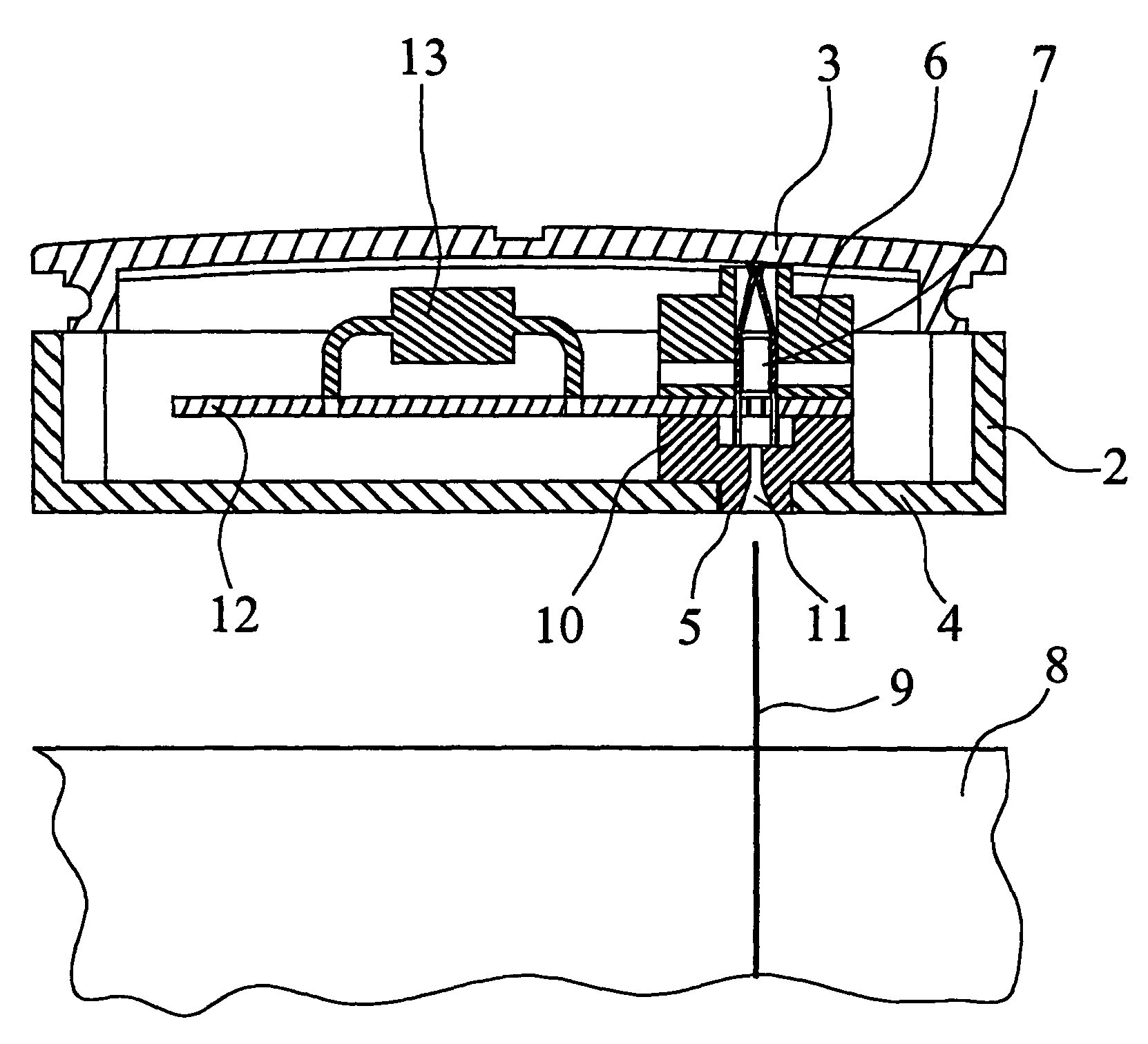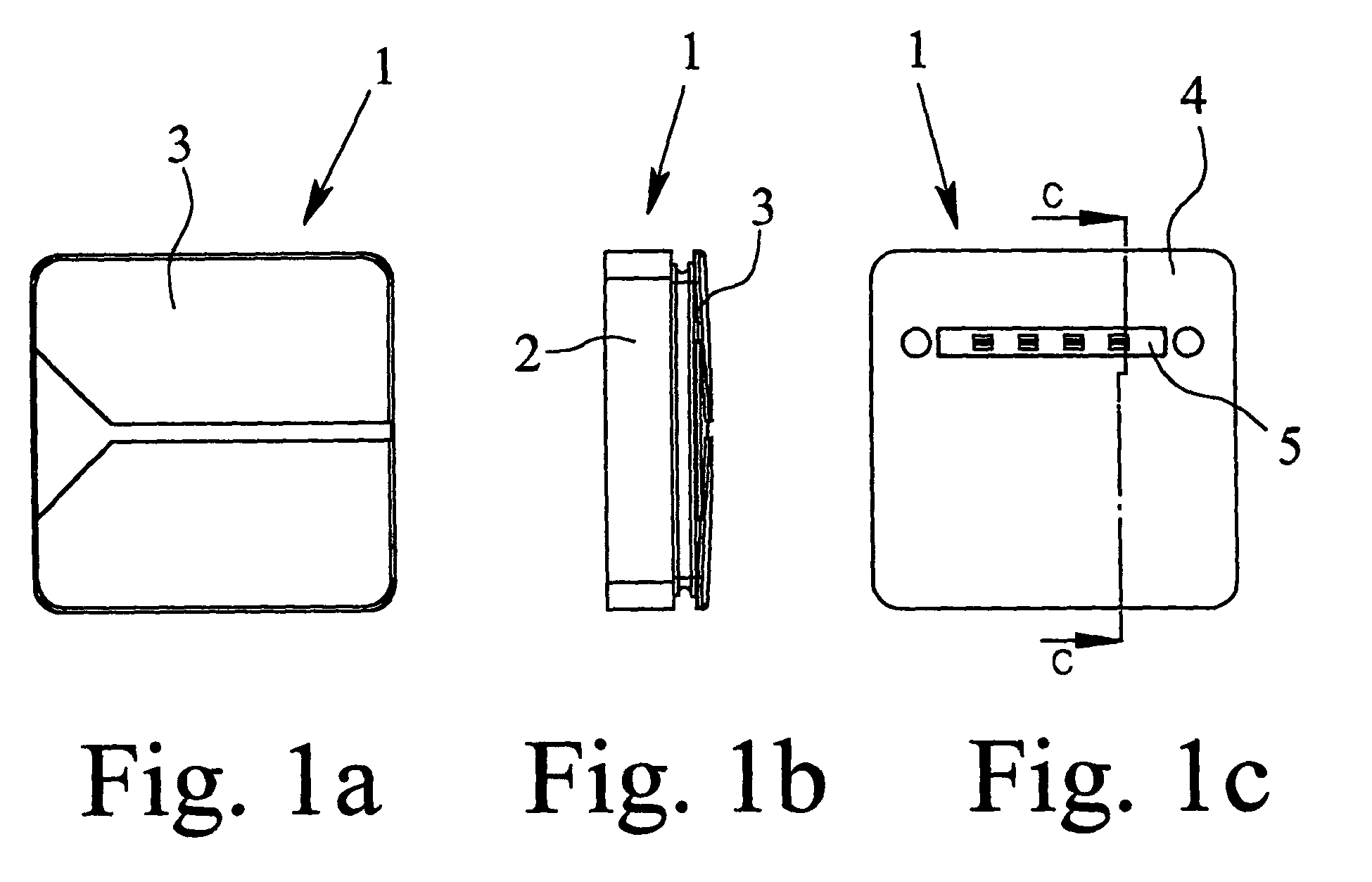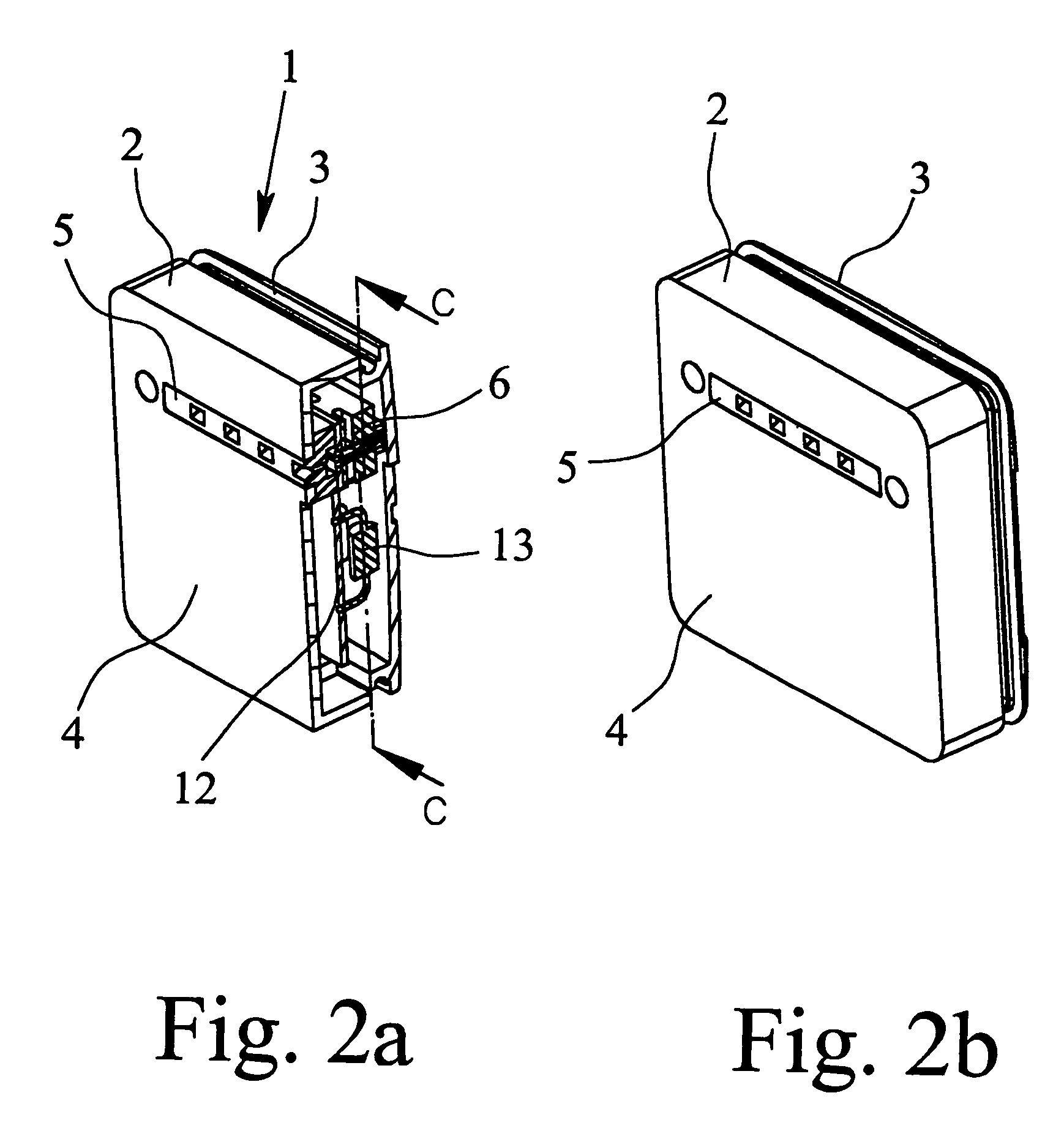Electrical junction and joint box for a solar cell module
a solar cell module and electric junction technology, applied in the direction of coupling device connection, photovoltaic energy generation, photovoltaic cells, etc., can solve the problems of solar cell partial shadowing, reduced power, and parallel connection of solar cells that are not normally used, and achieve simple and reliable connection of thin conductor strips
- Summary
- Abstract
- Description
- Claims
- Application Information
AI Technical Summary
Benefits of technology
Problems solved by technology
Method used
Image
Examples
Embodiment Construction
[0025]FIGS. 1a, 1b and 1c illustrate top, side and bottom views, respectively, of an electrical junction and joint box according to a preferred embodiment of the invention. The electrical junction and joint box includes a housing 1 with side walls 2 and a cover 3. Furthermore, a bottom 4 of the housing 1 has an elongated recess 5. As shown in FIG. 2a, a connection device 6, provided in the housing 1, can be reached via the recess 5.
[0026]The structure and arrangement of connection device 6 is described in more detail with reference to FIG. 3, which shows a section through the electrical junction and joint box according to the present invention along line C-C shown in FIG. 1c. FIG. 3 shows that the connection device 6 has a clamping means 7 in the form of two oppositely acting springs. When the junction and joint box is seated, according to the preferred embodiment of the invention, thin conductor strips 9 are routed out of a solar cell module 8 and are automatically inserted into th...
PUM
 Login to View More
Login to View More Abstract
Description
Claims
Application Information
 Login to View More
Login to View More - R&D
- Intellectual Property
- Life Sciences
- Materials
- Tech Scout
- Unparalleled Data Quality
- Higher Quality Content
- 60% Fewer Hallucinations
Browse by: Latest US Patents, China's latest patents, Technical Efficacy Thesaurus, Application Domain, Technology Topic, Popular Technical Reports.
© 2025 PatSnap. All rights reserved.Legal|Privacy policy|Modern Slavery Act Transparency Statement|Sitemap|About US| Contact US: help@patsnap.com



